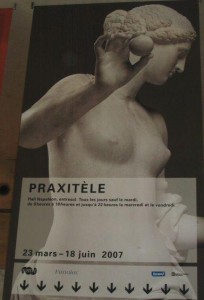 Monographic Exhibitions & the History of Art (Florence, 31 Mar-1 Apr 16)
Monographic Exhibitions & the History of Art (Florence, 31 Mar-1 Apr 16)
Istituto Lorenzo de’ Medici and the Università degli Studi di Firenze, Florence, Italy, March 31 – April 1, 2016
Deadline: Oct 15, 2015 Monographic Exhibitions and the History of Art – Call for Papers
As has often been noted, monographic or retrospective exhibitions that illustrate the career of a single individual are largely a product of the late 19th century desire to commemorate the deaths or centenaries of artists (e.g. Michelangelo, Firenze 1875; Donatello, Firenze 1886/87 to cite two Italian examples) or to serve patriotic ends using famous artists of the past to raise the status of an emerging nation state (e.g. Holbein, Dresden, 1871, discussed by Francis Haskell). While there are some earlier examples such as the Reynolds retrospective of 1813 at the Royal Academy, it is only in the second half of the century that the practice becomes common. By the early 20th century some of these exhibitions had become truly art-historical in focus in that their curators approached their subjects with the express purpose of visually chronicling the development of an artist during his career and providing a venue for connoisseurship, and in this way providing opportunities for new approaches to scholarship. Even those exhibitions of commemorative natures influenced art historical scholarship which, not surprisingly, emerged in the same decades that such exhibitions became popular, as attested to by the Holbein example. The nascent scientific discipline of art history owes much to the developing scientific rigor with which such monographic exhibitions were increasingly equipped – another theme we seek to elaborate through the individual studies. While much work has been done on the development of art historical literature, including the development of the art historical monograph (Gabriele Guercio), and to a lesser extent on the history of exhibitions (Francis Haskell, Enrico Castelnuovo, Roberto Longhi), the important relationship between the two has yet to receive the critical attention it deserves.
In an effort to better understand how the relationship between monographic exhibitions and artistic monographs has changed over time and with respect to the typology of artist subject (old master, contemporary or recently deceased), we invite papers on any aspect of how monographic or retrospective exhibitions have interacted with art history in different time periods and geographical contexts, including but not limited to the changing role of copies vs. originals, the development of connoisseurship, the role of historical documentation, the evolution of the scholarly catalogue, and considerations upon how artists were viewed by their contemporaries. It is one of our objectives to create an opportunity for scholars of various chronological frames from the Middle Ages to contemporary to exchange ideas regarding the fundamental role played by monographic exhibitions in the fields of art history and criticism. Since retrospectives were not confined to painters and sculptors – composers for example regularly received them from the 1930s – papers which address the role of like events in relation to different fields are most welcome, particularly if parallels may be drawn with the visual arts.
The conference will be held at the Istituto Lorenzo de’ Medici and the Università degli Studi di Firenze 31 March – 1 April 2016. Lodging and meals will be provided for those whose papers have been accepted. The proceedings will be published.
Please send your 200-300 word abstract in Italian or English and CV by 15 October 2015 to the conference secretary, Myra Stals: myra.stals@lorenzodemedici.it Maia Wellington Gahtan & Donatella Pegazzano, organizers, with the support of SISCA

Leave a Reply
You must be logged in to post a comment.